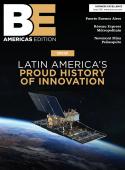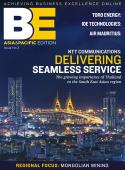Fine tuning┬áIconic guitar-maker Fender is introducing lean to the factory floor and creating a learning organization. Gay Sutton talks to senior vice president of global manufacturing Russell Espinosa and discovers how a disciple of Taiichi Ohno is sharing his knowledge to keep the company rocking. Think Fender and the name conjures up an image of mighty power chords, screaming guitar solos and sheer rock ÔÇÖn roll. The guitars themselves have achieved iconic status. Used by an illustrious procession of the worldÔÇÖs greatest musicians for over 50 years, their unique sound has played a pivotal part in the evolution of music. Rock, jazz, country & western, rhythm & blues: you name it and Fender is there delivering the sound. Fender is much more than this, though. Behind the image lies a manufacturing company that is proud of its heritage, committed to serving its customers worldwide, and determined to continually improve on all it does.ÔÇ£What weÔÇÖre doing here is making continuous improvement a way of life,ÔÇØ explains Russell Espinosa, senior vice president of global manufacturing. ÔÇ£IÔÇÖve seen a lot of companies bring in lean experts who focus on an area, make improvements and then go to the next area. Our aim is to learn the principles, methods, tools and thinking behind the methodology, then let our people go back to where they work, apply that understanding and make improvements every single day of the year. So it becomes less and less about hitting a home run and more about getting base hits every day. WeÔÇÖre essentially becoming a learning organization, driving continuous improvement day in and day out with every one of the 2,000 people within our manufacturing facilities.ÔÇØEspinosa was appointed to his position around 10 months ago and brings with him a wealth of experience in manufacturing. Having spent 16 years at Cummins and having played a part in the maturation of the Cummins production system before moving on to Honeywell and then to MTS Systems, he has developed a very clear idea and understanding of lean manufacturing. And it was this knowledge of lean that landed him the job at Fender. ÔÇ£When I arrived for the interview, I was told that a board memberÔÇöa lean advocateÔÇöwould be a key decision maker, to ensure that I was the right candidate.ÔÇØ Espinosa met with Ken Goodson, and the two men shared an understanding of lean and where it could take the company. Espinosa was eventually appointed to the post. But the meeting with Goodson had been a pivotal point. He realized that lean was a priority at Fender and had the support from senior leadership. ÔÇ£Then I found out that weÔÇÖd be working with one of the original disciples of Taiichi Ohno, a Mr. Hajima Oba. His approach is incredibly different from anything IÔÇÖve ever experienced, but he is a wealth of knowledge, and weÔÇÖre learning a great deal from him,ÔÇØ Espinosa says. ÔÇ£WeÔÇÖre very early in our journey, though. When I arrived here, we had islands of excellence in the company. I was very impressed with the small kaizen that our employees had been suggesting and implementing, especially at the factory in Ensenada, Mexico. And interestingly, because weÔÇÖre a musical instrument company and our kaizen efforts started in Mexico, weÔÇÖre using the Spanish word afinalo, which means ÔÇÿtune it upÔÇÖ to describe our kaizen efforts. So these small, daily kaizen events are ÔÇÿtune it upsÔÇÖ.ÔÇØ The company is focusing its attention on building and deploying the Fender Production System (FPS), which will be modeled after the Toyota Production System (TPS) and will drive operational excellence throughout the business. ÔÇ£Mr. Oba has interesting views on this,ÔÇØ says Espinosa. ÔÇ£He really doesnÔÇÖt want us to go and visit someone else for fear that weÔÇÖll do what so many other people doÔÇövisit, see all the things they like and imitate them. What heÔÇÖs teaching us to do is understand what we need in our business and then solve our business issues using the true north of the TPS.ÔÇØAlready, the company is highly specifying each stage of the work. The concept of single-piece flow has been introduced, and the workers are learning to perceive the person handing materials or products to them as a supplier and the person they pass the work on to as the customer, building a direct and unambiguous customer-supplier connection throughout the entire plant. To strengthen the already effective improvement process, Fender has also introduced the scientific method: plan, do, check, act. ÔÇ£You can see where weÔÇÖve begun to mature,ÔÇØ Espinosa says. ÔÇ£ItÔÇÖs very simple to see the material flow through the factory.ÔÇØOne of the secrets of developing a truly lean enterpriseÔÇöand something that Espinosa has learned over the yearsÔÇöis that it requires good leadership and change management skills along with the tools and methodologies of lean. ÔÇ£We also believe that this is the way to develop our leaders. What we look for in our leaders is people who can get results, can champion change, have strong interpersonal skills, have strong functional excellence in their field, and can demonstrate integrity and character.ÔÇØ And all of these are required on the shop floor as part of the lean drive. Meanwhile, Espinosa is beginning to look beyond the factory floor. The company held a supplier summit in December last year and communicated its lean ambitions to its raw material suppliers. ÔÇ£They could not have been more excited,ÔÇØ Espinosa recounts. ÔÇ£Our vision is to expand lean into our supply base and think of our suppliers as an extension of our operation. But what we donÔÇÖt want to do is ask our suppliers to do something that weÔÇÖre not doing yet.ÔÇØ Therefore, once the company has built a strong foundation of lean manufacturing in its own operations, it intends to then work with suppliers and coach them in how to drive down costs from within their own organizations. ÔÇ£That will also help them become strong suppliers and grow their businesses with other customers.ÔÇ£WeÔÇÖre still at a very early stage, though, and what we have embarked on is a never-ending journey,ÔÇØ Espinosa finishes. ÔÇ£If you ask me today have we specified what the FPS is, the answer is itÔÇÖs not possible because we have too much to learn yet. If you ask me do we have a clear vision of where true north isÔÇöwhere weÔÇÖre headedÔÇöthe answer is, absolutely.ÔÇØ┬áÔÇô Editorial research by Michael Fretwell┬á









